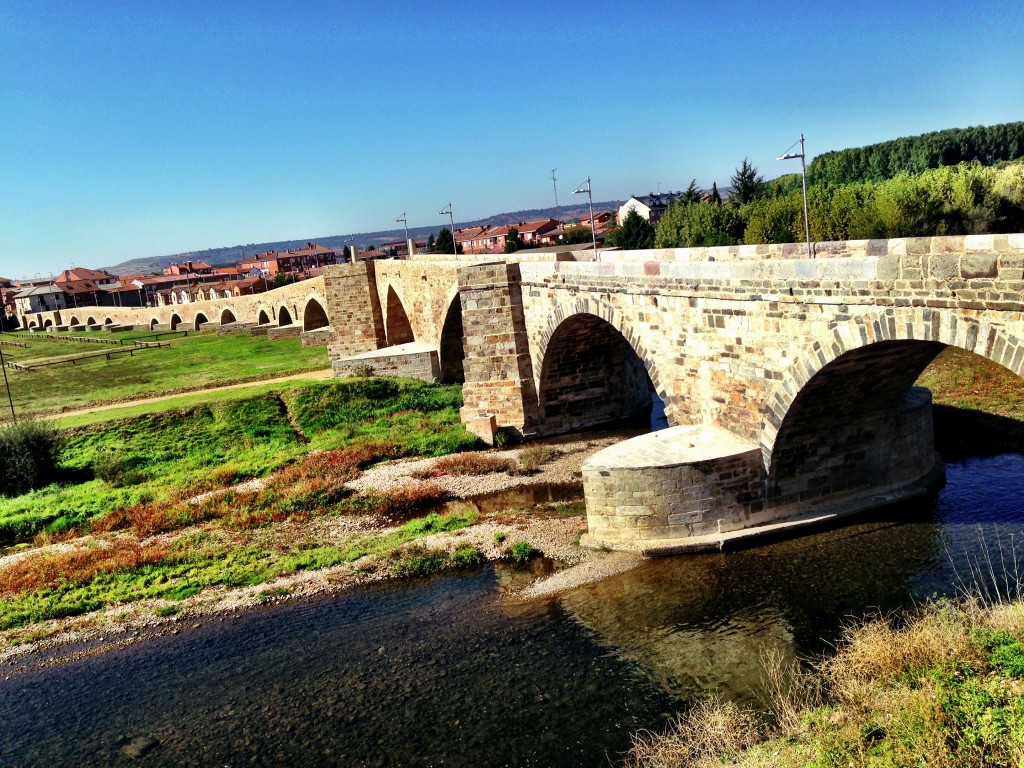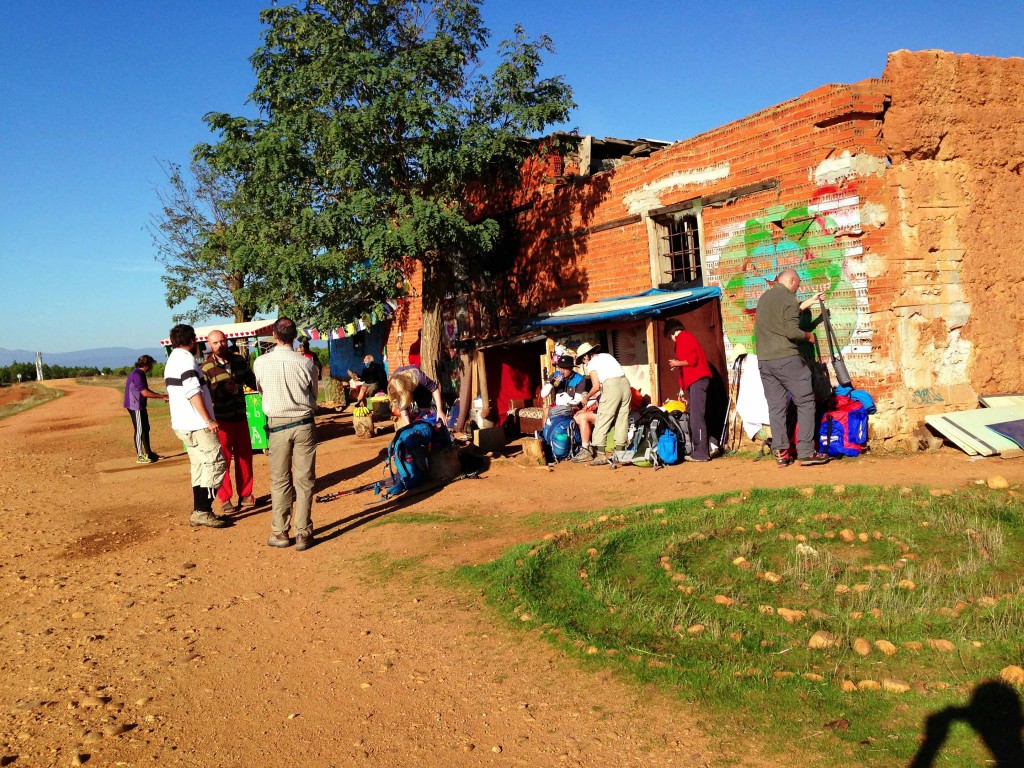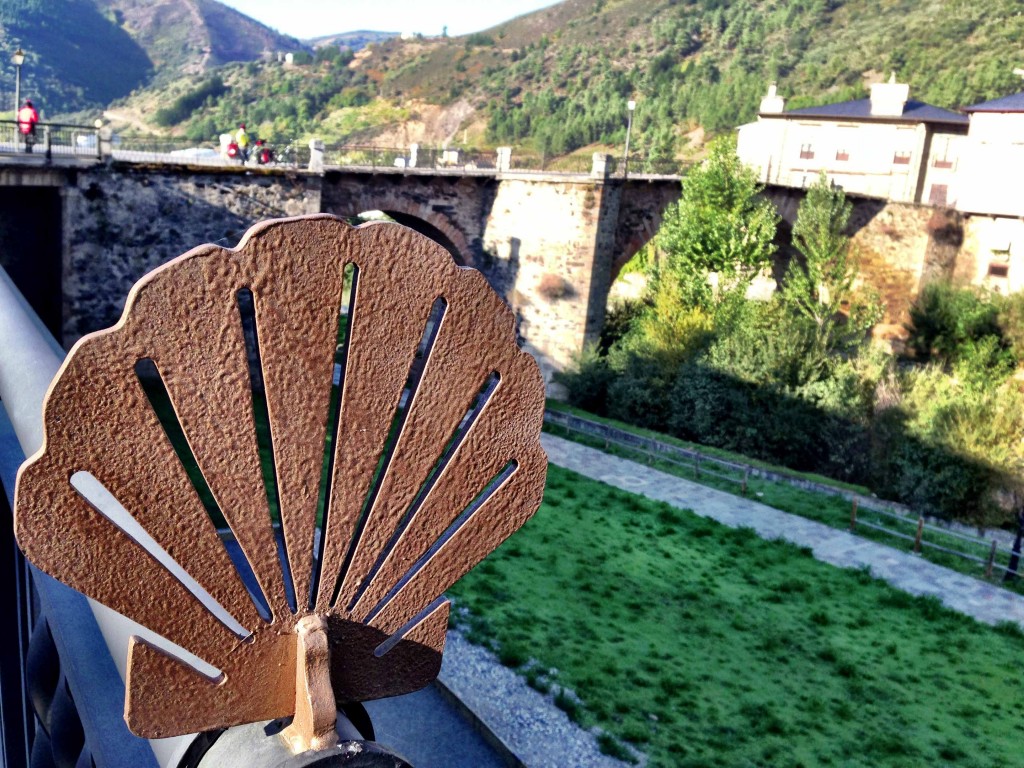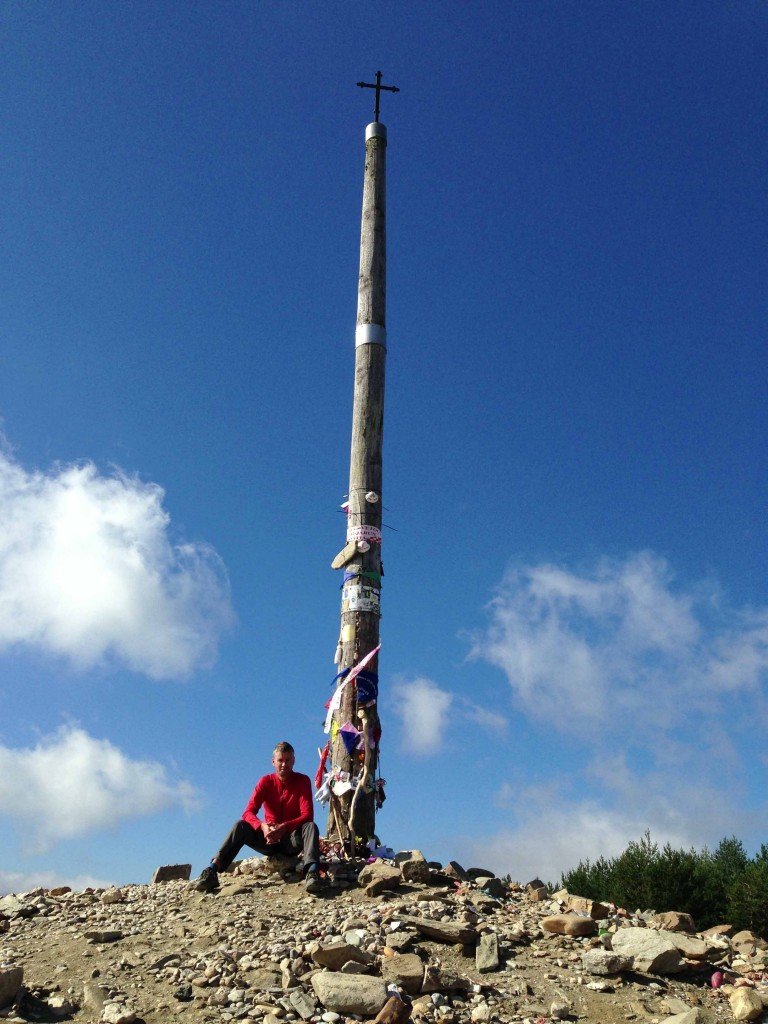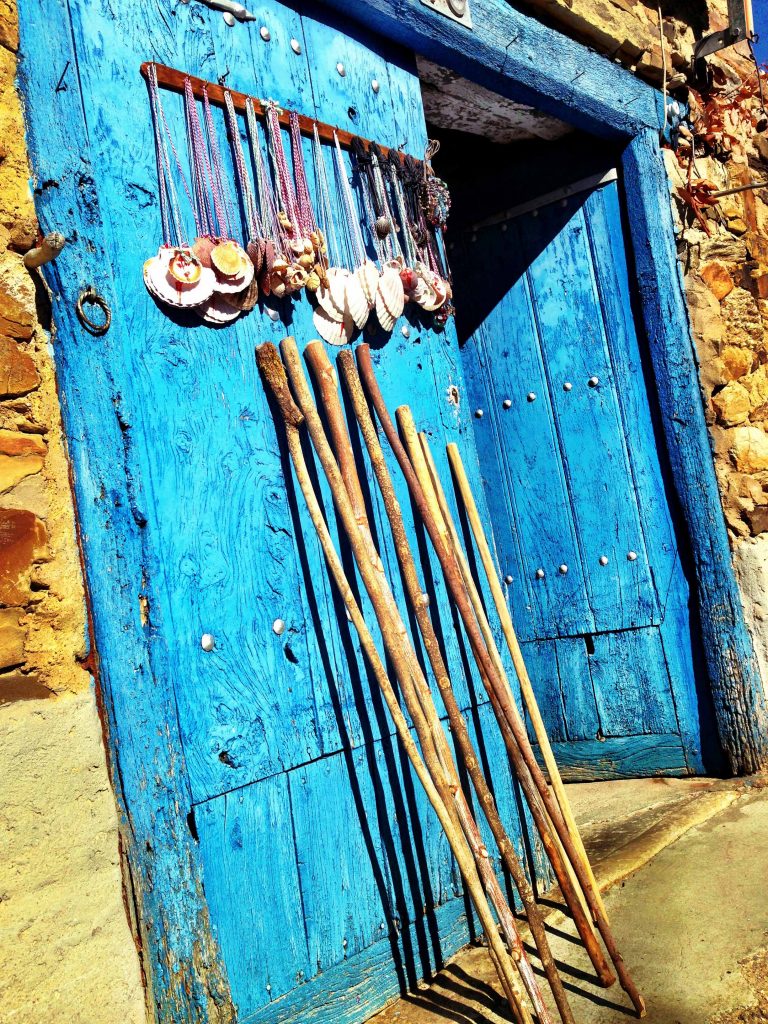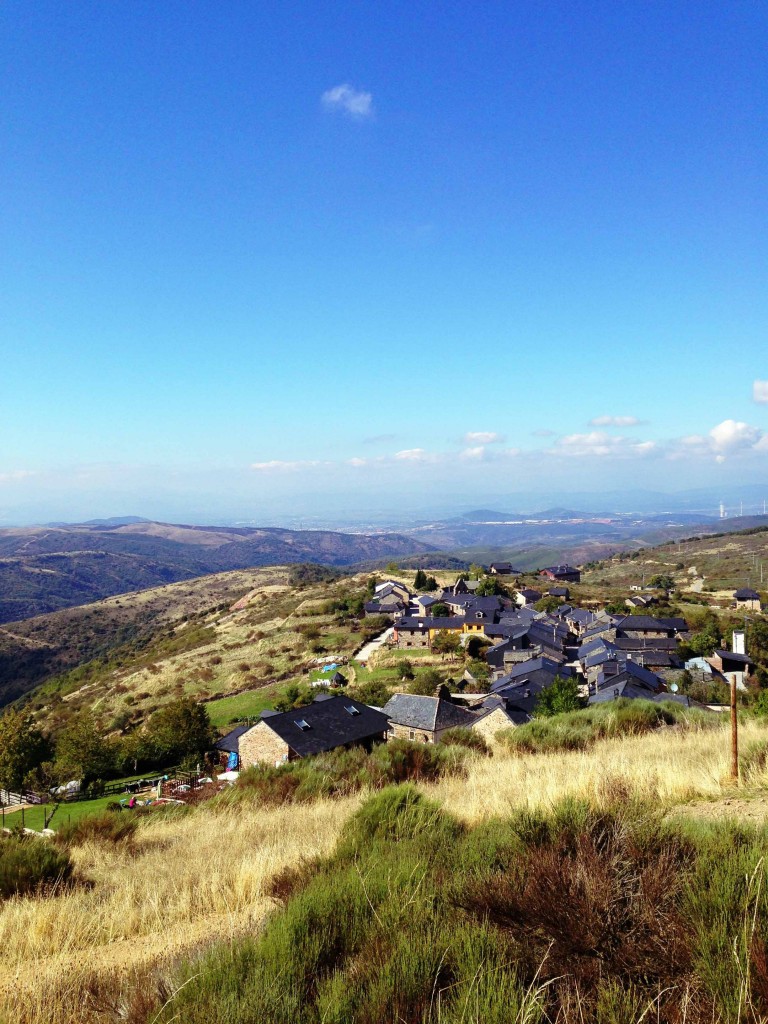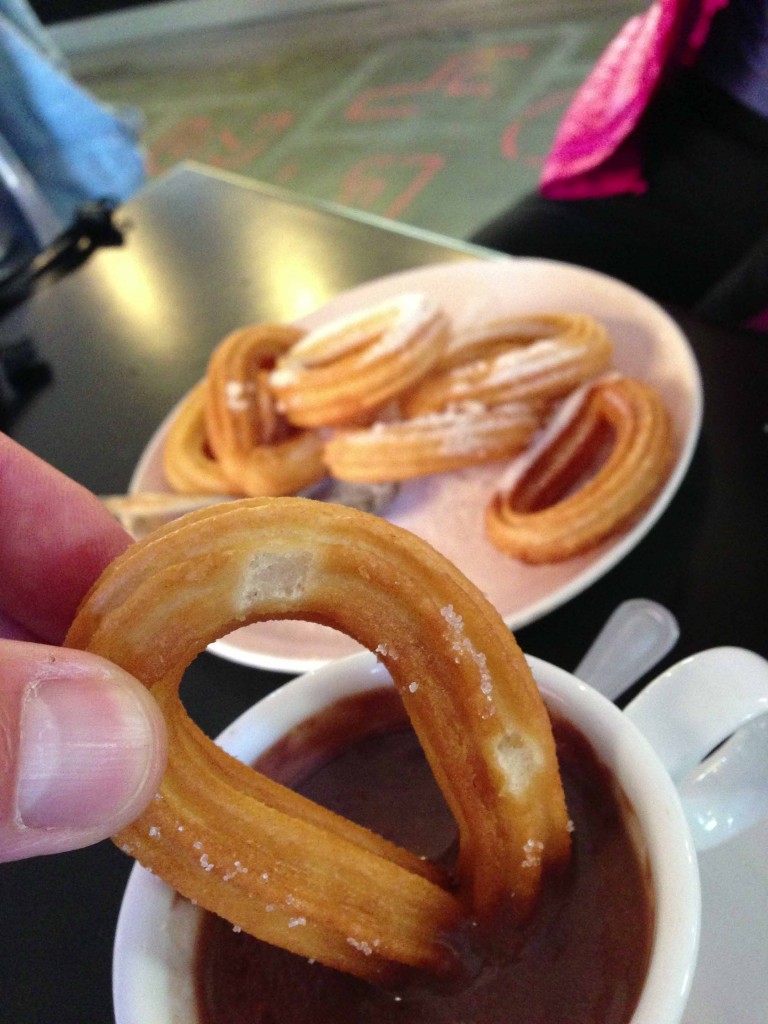Date: 12th October 2013
Location: Villafranca del Bierzo
Miles walked: 880
Miles left: 120
The Puente de Orbigo on the approach to the old town in Hospital de Orbigo is an impressive sight. Nearly 1000 years old, just under 300 metres long and sporting 20 arches, it made me wonder how we could be capable of building such a feat of engineering now, let alone all those years ago. The strange part is that the River Orbigo itself is perhaps just 20 metres wide and it wasn’t until I found out that prior to a dam being built at Barrios de Luna the river was indeed a lot wider. Great bridge, shame about the dam.
The Puente de Orbigo
There are new faces every day now and the old ones have vanished. Now warmed up I’m putting in an extra 7 miles a day, from 21 miles to around 28. Most pilgrims reach a comfortable daily level; usually around 15 miles and they stick with it. This amount should see most of them through the Spanish section in around a month, which is the amount of time most afford themselves. This is not enough for me. It’s not a bravado, ‘I can walk further’ ego thing, I start around 8am and walk till about 5pm, the time dictates the mileage. Consequently, most of the faces I was used to seeing are now behind and I have fresher characters to meet. Tomorrow, it will change again unless I meet someone who walks the same distance.
The mornings in Spain are mysteriously dark. Whilst the sun sets around 8pm, it’s not really truly light until 9am. Couple this with some dark and moody skies, brooding more as the year progresses, and it has an effect on the moral. I walk patiently, glancing every few minutes over my shoulder in anticipation of the orange glow finally giving way to a rising sun. It’s too warm with my jacket on and a little too cold with it off. I settle for taking it off and walking quicker to generate some heat. Having had my fill of road walking this past week, I take a longer alternative through countryside as the sound of engines and tyres on wet roads fades.
I missed my usual coffee and tortilla (a kind of omelette with potatoes) as the bars in Hospital de Orbigo were closed. Reaching Villares de Orbigo I homed in on a café sign, only to be met by a retreating German hiker muttering ‘shut’. Valdeiglesias was the final chance before an 8 mile stretch to Astorga which also failed to deliver. It started to rain and my mood slumped further as I wrapped a poncho around me and my pack and huddled under the umbrella. Being wet, cold or hungry are accepted when hiking at some point, all three at the same time is just plain unfair.
But the Camino does have a habit of toying with moods. One minute it’s teasing you with closed bars, perhaps a stiff climb or a muddy section and the next it offers an apology and promises to make everything better. Today was a prime example when 2 miles from Valdeiglesias and just settling into that 8 miler I crested a hill. A ramshackle old building gradually came into view as I neared the top of the hill, old terracotta bricks matched a rust red soil and as I neared a collection of pilgrims stood around chatting. Too many pilgrims in one place in the middle of nowhere can only mean one thing – food.
Too many pilgrims means only thing – Food
Sure enough, this little gem, not marked on my map, had sprung up since my guidebook was published. The two Spanish running the place were darting around re-filling coffee flasks, slicing fruit, topping up the bread pile, shaking hands and chatting with those grateful for a little sustenance. They also appeared to appreciate the finer foods in life – the bread had just been baked, still crusty and warm. Melon, strawberries, apples and pears glistened as the sun finally broke through overhead and warmed us all. Juices, various milk alternatives, jams and delight of delights, peanut butter!
I downed my pack, found a suitable sawn log to perch, smeared some of my favourite spread over bread still steaming, poured myself a coffee and sat smiling. Laughter bounced all around me, jackets were torn off as the sun warmed our backs and suddenly, in that tiny little corner of North West Spain, our world could not have been more rewarding.
I slid a donation in the tin and set off to Astorga, kicking up clouds of red dust. The Montes de Leon were now visible directly ahead of me, stretching up on the horizon. Leon itself, with its charming city centre wrapped around the magnificent cathedral was now a fading memory, again. Astorga came into view as I descended to San Justo de la Vega, perched like a fortress on a hill. I crossed over the river, turned right and gradually the town became larger, taller and more dominant as I approached.
Still full from my feast I had no reason to stop, instead I wound through the streets, looking for Camino markers to guide me and soon Astorga fell silent. I walked with Veronic, a French Canadian from Quebec who I had met at the Albergue Verde the previous evening. We walked at a similar speed despite her suffering from a shin splint which slowed her a little on the ascents. We shared the path, conversation and our experience on EL Camino so far until reaching El Ganso, a small hamlet with one refuge nestled in a region known as the Maragateria.
Leaving Villafranca del Bierzo
This area is home to around 50 villages and 5,000 inhabitants, known as the Maragatos. Little is known about their origins, some say they are a mixed race from the Moorish and Gothic immigrants dating back to the 8th century. They were possibly merchants dealing in the trade of fish and precious metals but all this came to an end with the arrival of the railways and they left places like Foncebadon to migrate to the cities. Their red coloured stone houses are still here with large entrances for carts and cattle.
Rain threatened again as we left in the morning and headed into the Montes de Leon, moving up from El Ganso on kind inclines, the path a mix of earth and stones occasionally weaving through old oak woods. As the ups gradually petered out, skies cleared to blue and we reached the Cruz de Ferro, one of the most familiar points on El Camino. On the plateau of Monte Irago an iron cross sits atop a tall oak post, itself buried in a pile of stones which have been left there by pilgrims for centuries. Tradition dictates that a stone should be gathered from one’s home and carried along the Camino until reaching the cross where it should be placed on the pile. It signifies a leaving behind of burdens and troubles. Somewhere in that pile lies a silver pendant which I placed amongst the stones some 11 years ago. I think it may have indeed delivered on its promise.
The Cruz de Ferro
A westerly wind whipping in had dispersed the clouds on the other side of Monte Irago and before long we were bathed in light and warmth, building a sweat up the hill with magnificent views opening out all around us. The city of Ponferrada came into view 1,000 metres below us but our destination was Molinaseca, some 4 miles before. Our track was clearly visible, a beige line running through green bushes against a sky streamed with perfect clouds. We descended, pausing briefly in El Acebo for lunch and spent 6 knee straining miles descending.
Molinaseca was a soaked affair on my last visit, water tumbled off, over, around and down just about any medium in its way. This time, thankfully, it was dry. Arriving late afternoon most of the inhabitants were just recovering from a siesta, the streets were barren, void of life and little broke the silence. A few pilgrims ambled around looking for accommodation and a snack to tide over the hunger until dinner in one of many café and restaurants. We walked through the village and out the other side which is where I remembered the municipal refuge was, but it was not to be. In the last few years it had been replaced with a newer, private version on the opposite side of the road. It saddened me a little, my stay before had good memories at one of the few places with any sense of internal space and an unusual layout. The swankier refuge was clean, fairly spacious but lacking in character. It made me wonder why they had torn the old place down, it made no sense.
Small business in EL Ganso selling walking sticks and Camino shells
On the ascent up to the Cruz de Ferro
And the view down – El Acebo in the foreground and down in the valley is Ponferrada
Ponferrada came and went in the morning, we had no reason to stop except for some chocolate and churros (sort of donut sticks) and a quick admirable check on the Templars Castle. A 20 mile day would see us reach Villafranca del Bierzo where I had stayed for 2 weeks all those years ago and helped build an extension to the refuge. Run by Jato the Faith Healer, it was a quirky place which stood on a site that had hosted pilgrims for hundreds of years. I had stayed whilst waiting for a friend from England to come out and join me for the last section to Santiago and swapped my labour for food and board.
Hot chocolate with Churros – Naughty but needed
We walked slowly, feeling lethargic for some reason. The day seemed longer than 20 miles, broken up by a couple of café stops, trudging would be a more accurate description. Cacabelos arrived mid-afternoon and left us wondering why we weren’t staying there. It had a laid back bustle that tried to pick us up, stone architecture, an old church still squeezed between streets, lively cafes and those houses with a classic peeling paint and plaster look that are magnificent.
5 miles To Villafranca and we were offered a road walk or a longer variation through the countryside. Legs tired and lacking in sleep we chose the road, quiet as it thankfully was. I paused occasionally to prod some walnuts down from their perch with the aid of a trekking pole, they now are just coming to full ripeness, the bitterness fading. Remnants of vegetables scattered the occasional garden, tomatoes turning brown in the colder weather and orange squashes taking over as the inform produce.
I paused near the refuge and hesitantly walked through the arch to the inner courtyard. Such good memories came back, the extension stood proud, an old stone bath discovered during the past building work had been partially restored. I recognised no one, of course I didn’t. I paused and asked one of the wardens where Jato was, to be told he was sleeping. Then I left, I didn’t want to stay there. The urge to move on and let this place be overcame me. My head said stay but my heart, always offering the wiser choice, gently steered me back out and down towards the town.
Now I realise that some memories are best left, I didn’t want to change them, I wanted to remember that place as a fading photo best left undisturbed. Walking the Camino again was a good choice but some photos didn’t need editing. I paused briefly for one last glance, smiled, and let my photo be.
Molinaseca
